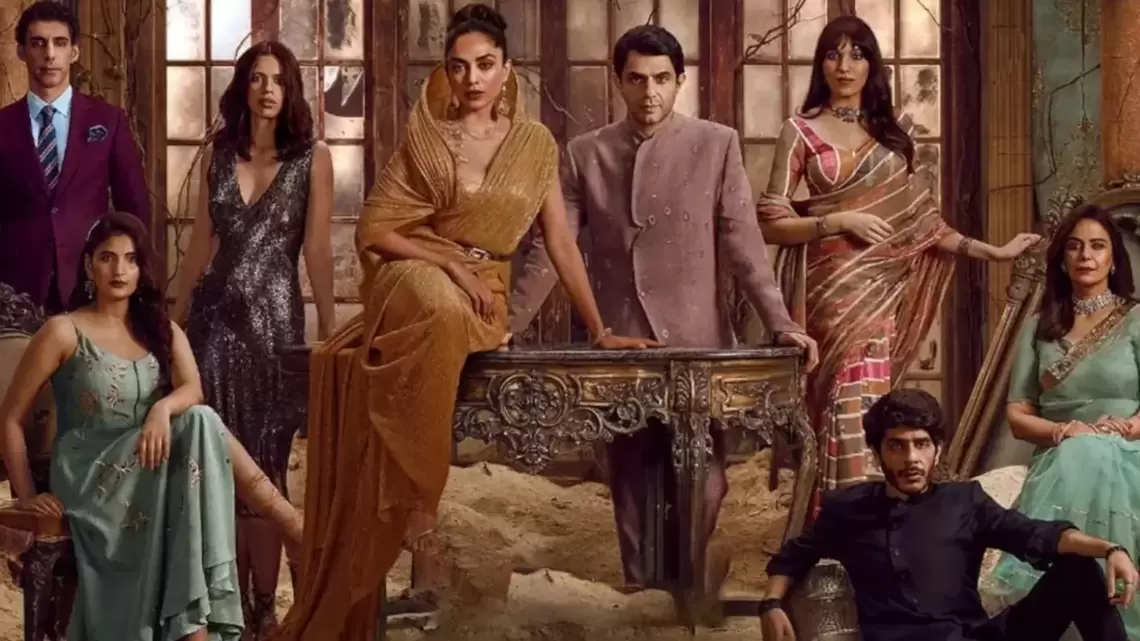
Streaming platforms and shows that meld style into the storyline are giving fashion a stage more powerful than the ramp
The Instagram feeds of leading Indian designers in the past week have been all about Season 2 of Made In Heaven. The popular streaming series serves as a curated shop window, with actors wearing creations by designers such as Manish Malhotra, Amit Aggarwal, Bodice, Gauri and Nainika, and Rishta by Arjun Saluja. Sabyasachi Mukherjee even made an appearance in the first episode.
Given the show’s backdrop is marriage, the narrative naturally lends itself to fashion, bridalwear being the main driver of the business in India. The mix of style felt like a seamless part of the show, exemplifying how streaming platforms like Netflix, Hotstar and Amazon Prime are giving fashion a stage more powerful than the ramp.
Behind the styling of the show is former model Bhawna Sharma, who’s first full-length film, Supermen Of Malegoan, by Reema Kagati (co-creator of Made In Heaven) is currently in post production.
“Season 1 had worked closely with contemporary designers (season 1’s costume designer, Poornamrita Singh, worked with designers like Raw Mango and Shivan and Narresh). For this season, we need to make this approach stronger,” says Sharma, a former model known for her sense of mixing high fashion with high street. Her first job as a stylist was a campaign for Virat Kohli’s apparel brand Wrogn; Made In Heaven 2 is her first long format. “I read the script and I could visualise the character and how they would dress,” says Sharma. “I grew up in Delhi and I come from fashion and putting the two together was a natural fit.”
Payal Parija, a Dallas-based fashion commentator who co-founded the blog High Heel Confidential in 2007, says: “Season 1 already had our attention fashion-wise because here came an OTT series that considered that when presenting a storyline about weddings, you must also focus on the fashion. They didn’t cut corners in that arena. They sourced from the labels that we see in real-life big fat weddings. I don’t think we can assume automatically that all OTT series will get this much attention. Costume sourcing (not to be confused with costume designing) comes with a high-cost and it has its own intricacies.”
The fact that people can relate to the show’s characters—at least one will remind you of a friend or family member—has made audiences take note of the fashion, says Sharma. “You can believe these are pieces from their wardrobe,” she says.
The main characters, Tara (Sobhita Dhulipala) and Karan (Arjun Mathur), wore pieces from Delhi-based label Bodice.
The decision to work with a separate couturier for each of the 10 weddings has given designers a showcase for ensembles. “This is how many families approach a wedding—they work with one designer for the whole event,” says Sharma. Homegrown, high-street and luxury brands come together in the scenes that are not wedding-centric, giving the show’s fashion an India-modern aesthetic that the audience can take style cues from.
For some labels, the imact has been visible immediately. Bodice’s founder and creative director Ruchika Sachdeva says, “OTT gets you the eyeballs… (and) it does open you to a different (and new) audience.”
Hyderabad-based Aisha Rao, who dressed Naina Sareen for the show in a Barbie-pink lehnga, says, “We instantly felt the love on social media.”
It can be hard, though, to translate this moment into sales if the piece on the show is not on the shop floor. “The collection from which the lehnga was sourced is from 2019 and not in production now…. But we are trying to find a way around it, it’s exciting to see a lot of interest coming in,” says Rao.
One designer, however, says he was not dealt with professionally. Last week, Tarun Tahiliani said on Instagram that his clothes were used for an episode and attributed to Akshay Jaiswal, a fictitious designer who appears as a character in the show. “It is most unfortunate when a popular OTT series violates the understanding behind the provision of clothing in the first place! Case in point: Significant portions of the second episode of ‘Made in Heaven,’ were styled using clothes provided by the Tarun Tahiliani studio in good faith to the stylist,” he posted on Instagram.
“There’s been a misunderstanding and I would like to resolve it… not speak about it in public,” says Sharma. It can’t be denied, however, that some designers were credited correctly—Sabyasachi appears as himself in the episode in which his clothes are used—and others not.
Film and TV are known to use designer clothing and provide end credits to designers. As Sachdeva explains, people may like the clothes but unless they know the brand, they won’t be able to find them. “Some sort of resource guide would really help.”
Sujata Assomull is a journalist, an author and a mindful fashion advocate.